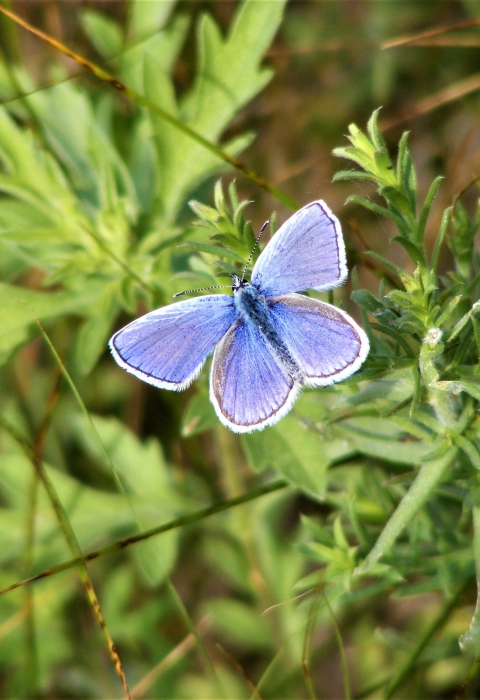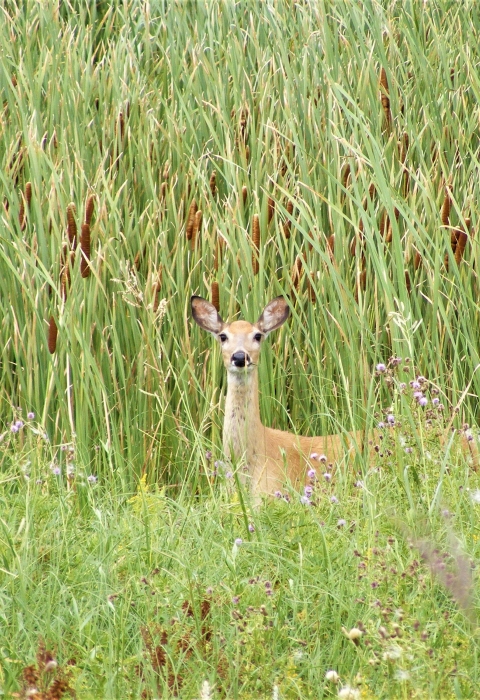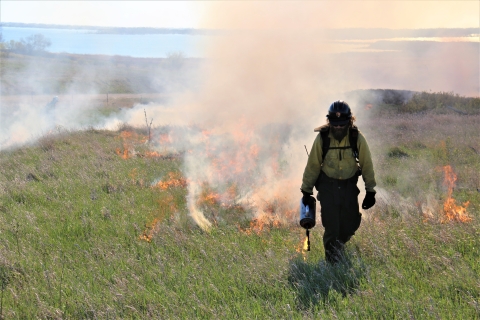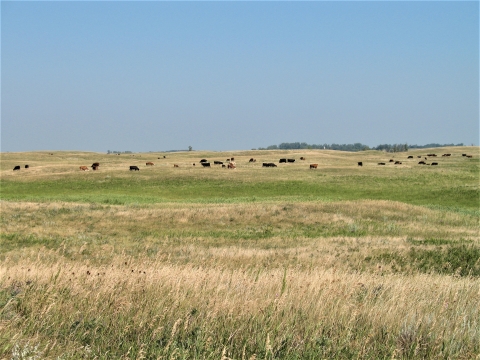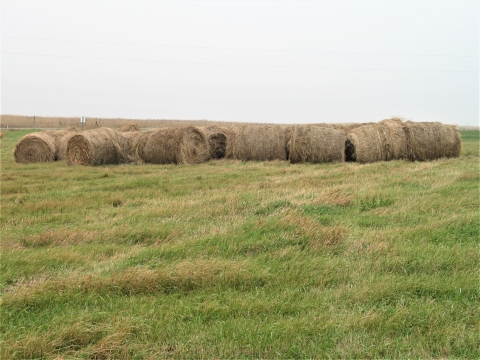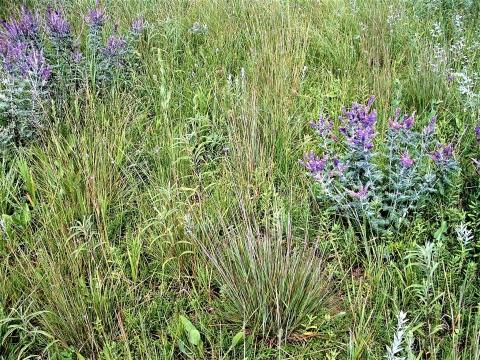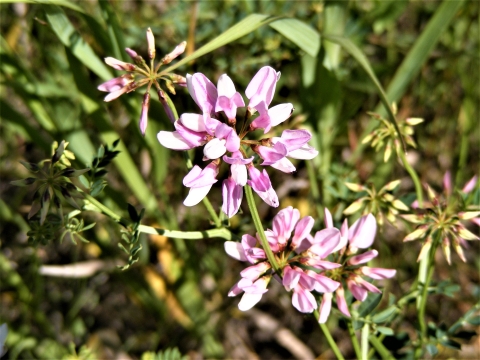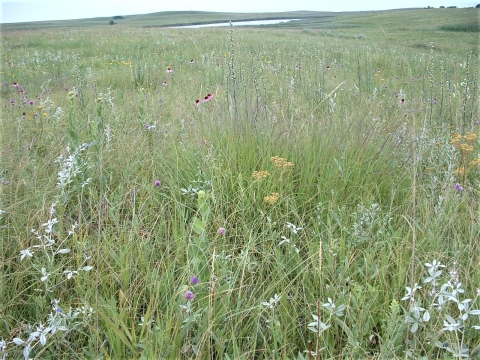What We Do
Wildlife conservation is at the heart of the National Wildlife Refuge System. It drives the management of all the lands and waters that are part of it, from the purposes for which a refuge is established, to the recreational activities offered, to the resource management tools used. Using conservation best practices, U.S. Fish and Wildlife Service employees manage Refuge System lands and waters to help ensure the survival of native species.
Grasslands are well adapted to frequent droughts and harsh winters. They are renewed by fire, whether started by lightning or people. Historically, millions of bison would move through the area, trampling the ground and filling their bellies before they moved on to another area. Still, the grass comes back. Grazing is so important to grasslands that today, we try to mimic the impacts of bison on a much smaller scale with cattle to maintain the health and diversity of Refuge grasslands.
Management and Conservation
Habitat Management
Prescribed Burning
Fire is a natural event in grasslands. In the past, most fires would have started from lightning strikes, though people also been implicated in setting grass aflame. Though the after effects of a fire initially look devastating, fires rejuvenate grasslands by getting rid of old vegetation and adding a quick burst of nutrients to the soil. Today, Refuge staff use fire under carefully controlled conditions to improve the health and diversity of lands we manage.
Grazing
In the past, bison roamed the prairies in massive herds, eating and trampling grass and adding nutrients as they went. Today, Refuge staff use other grazers - primarily cattle - to manage our grasslands. When used properly, grazing is a useful tool for controlling exotic plants, reducing dead plant material, and increasing nutrient cycling, thereby improving a stand of grass. Since the Refuge doesn't have its own livestock, special use permits are issued with ranchers for them to graze their cattle for a set time period. Ranchers benefit by resting some of their pastures and the Refuge gets improved habitat for wildlife.
Haying
Haying is another management tool that can be used to remove excess vegetation from grasslands. By removing the current years' growth, less dead material builds up, allowing new plants easier access to sunlight and precipitation. Haying is done by private landowners with a special use permit. The landowners keep the hay for their operations and wildlife benefit with improved nesting cover the following year.
Grassland Restoration
Some of the grasslands we manage are native prairie - they have never been plowed up and retain many native species. Other grasslands may have been plowed up and planted to crops or tame grasses for pasture or hay. The non-native grasslands may have only one or two species of plants and may be infested by Canada thistle or other weeds. The Refuge staff works to restore these areas using native grass and flower species. To do this, the land is planted with crops for a few years to get a clean seed bed. After that time period, 10-20 native species are planted and nurtured for the next few years. Though this is a far cry from native prairie, these areas do provide more diversity for wildlife.
Weeds and Invasive Species
Invasive species are plants that have been introduced to an area and because they often have no natural predators or controls in their new habitat, they out-compete native species. This often results in a monoculture or greatly reduces the diversity of a site. These weeds can be treated chemically, mechanically, or with biological controls. Treatment depends on the species, the size of the infestation, and whether the area is a native or restored grassland.
Trees
Trees do not occur naturally in prairie except around lakes or in coulees, where conditions are generally cooler, wetter, and protected from fire. When pioneers first crossed the Great Plains, few cared to stay as there was little to use for fuel or building materials. That changed when the Timber Culture Act (1873) offered settlers additional land if they planted trees. Trees planting and agriculture fragmented the open expanses of prairie, changing the habitat. When possible, Refuge staff remove trees to provide habitat for grassland birds and other wildlife that evolved with and survive better in treeless habitats.
Rest
Although grasslands benefit from some type of management that removes some vegetation, doing it too much or too often is not a good thing. For this reason, managers often use rest as a management tool.
Cooperative Agriculture Opportunities for Grazing on Waterfowl Production Areas
Waubay National Wildlife Refuge has cooperative agriculture opportunities for grazing on Waterfowl Production Areas in Clark, Codington, Day, Grant, Marshall, and Roberts counties for up to five years. Applications may be requested by calling the office at 605-947-4521. To be considered, applicants must complete and submit the bid form/application. Successful applicants will be selected through an open and competitive process. For more information, please contact Refuge Manager.
Law Enforcement
Certain regulations are necessary for the protection of wildlife and wildlife habitat and for visitor safety. Observance of these rules will makes the Refuge a better place for visitors and wildlife. The Refuge Manager reserves the right to close all or part of the Refuge to hunting and/or public access at any time. Specific regulations are posted. The Refuge is also subject to Federal, State, and local laws and regulations.
